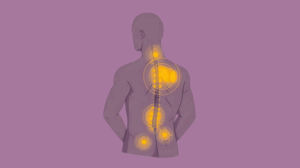Have you ever felt that workouts or physically demanding tasks are getting harder as you age? If you’re in your 30s or 40s, this isn’t just a feeling your body is undergoing real physiological changes. One of the most significant is age-related muscle loss, also known as sarcopenia. This condition can reduce your strength, mobility, and independence over time. However, there’s good news: protein the powerhouse nutrient can slow down and even reverse some of this damage when paired with the right lifestyle choices.
This article explores how protein can combat muscle loss, how much you need, what types are best, and how you can incorporate it into your daily routine for lasting results.
What Is Sarcopenia and Why Does It Happen?
Sarcopenia is the progressive loss of muscle mass and function that begins as early as age 30. On average, adults lose 3–8% of muscle mass per decade after 30, and this rate accelerates after 60.
Causes of Muscle Loss:
- Reduced Physical Activity: Many people become less active with age.
- Hormonal Changes: Lower testosterone, estrogen, and growth hormone levels impact muscle protein synthesis.
- Nutritional Deficiencies: Lack of protein and essential nutrients.
- Inflammation and Oxidative Stress: Chronic inflammation damages muscle cells.
- Neurological Decline: Muscle control decreases as nerve cells degenerate.
These factors combined create an imbalance between muscle protein breakdown and synthesis, leading to net loss over time.
Why Protein Matters More After 30
Protein is essential for building, repairing, and maintaining muscle. In your 30s and 40s, your body becomes less efficient at processing protein, meaning you need more of it to trigger the same muscle-building effect.
Key Roles of Protein:
- Muscle Repair and Growth: Rebuilds muscle fibers damaged during physical activity.
- Supports Metabolism: Muscles burn more calories at rest.
- Prevents Fat Accumulation: Maintains a healthy body composition.
- Enhances Recovery: Reduces post-exercise muscle soreness and fatigue.
How Much Protein Do You Really Need?
While the Recommended Dietary Allowance (RDA) for protein is 0.8 grams per kilogram of body weight, this is the minimum to prevent deficiency not enough to maintain muscle mass as you age.
Best Sources of High-Quality Protein
Animal-Based Proteins (Complete Proteins):
- Eggs – Highly bioavailable and rich in BCAAs.
- Chicken Breast – Lean and high in protein.
- Fish (Salmon, Tuna) – Packed with protein and omega-3 fatty acids.
- Greek Yogurt – Doubles up on calcium and protein.
- Paneer and Milk – Excellent for vegetarians in India.
Plant-Based Proteins (Pair to Make Complete):
- Lentils & Legumes (Dal, Rajma) – High in fiber and protein.
- Tofu & Tempeh – Soy-based, rich in all essential amino acids.
- Quinoa – One of the few complete plant proteins.
- Nuts & Seeds – Almonds, chia seeds, flaxseeds.
- Protein Powders (Whey, Pea, Brown Rice) – Ideal for busy lifestyles.
Tip: Combine lentils + rice or roti + dal to get a complete amino acid profile if you’re vegetarian.
What Are Amino Acids and Why Are BCAAs Important?
Amino acids are the building blocks of protein. Among them, Branched-Chain Amino Acids (BCAAs) Leucine, Isoleucine, and Valine are especially vital for muscle health.
Benefits of BCAAs:
- Stimulate muscle protein synthesis
- Reduce muscle soreness
- Improve exercise performance
- Decrease muscle fatigue
BCAA-Rich Foods:
- Eggs
- Chicken
- Cottage cheese (Paneer)
- Soy products
- Protein powders (Whey, BCAA blends)
Protein + Exercise: A Winning Combo
Protein intake without physical activity will only take you so far. To truly preserve muscle and stay strong into your 40s and beyond, pair protein with resistance training.
Effective Exercises:
- Bodyweight Exercises: Squats, lunges, push-ups
- Weight Training: Dumbbells, resistance bands
- Functional Movements: Farmer’s carry, step-ups
- Yoga & Pilates: Improve muscle control and flexibility
Timing Tip: Consuming protein within 30–60 minutes post-workout improves muscle recovery and growth.
Nutrient Timing: When to Eat Protein
Protein should be spread evenly throughout the day, not just in one big meal.
Lifestyle Tips to Maximize Muscle Health
Stay Active Daily
Movement throughout the day maintains muscle activation. Use stairs, walk often, and avoid prolonged sitting.
Sleep Well
Your body repairs muscle during deep sleep. Aim for 7–9 hours per night.
Manage Stress
High cortisol levels from stress can promote muscle breakdown. Practice mindfulness, deep breathing, or yoga.
Stay Hydrated
Muscle tissue is 75% water. Dehydration affects performance and recovery.
Signs of Muscle Loss to Watch For
- Difficulty lifting objects
- Fatigue during basic activities
- Slower walking pace
- Unintended weight loss
- Muscle weakness or sagging
Early action with diet and exercise can reverse mild muscle loss.
Conclusion
Muscle loss in your 30s and 40s isn’t inevitable it’s preventable and even reversible with the right strategy. Prioritize adequate protein intake, choose high-quality protein sources, stay physically active, and adopt a balanced lifestyle. These small, consistent efforts will help you maintain your strength, function, and independence well into later life.
Scientific References
- Bauer, J., Biolo, G., Cederholm, T., Cesari, M., Cruz‑Jentoft, A. J., Morley, J. E., … & Boirie, Y. (2013). Evidence‑based recommendations for optimal dietary protein intake in older people: a position paper from the PROT‑AGE Study Group. Journal of the American Medical Directors Association, 14(8), 542–559. https://doi.org/10.1016/j.jamda.2013.05.021
- Paddon‑Jones, D., Sheffield‑Moore, M., Zhang, X.‑J., Volpi, E., & Wolf, S. E. (2004). Amino acid ingestion improves muscle protein synthesis in the young and elderly. American Journal of Physiology – Endocrinology and Metabolism, 286(4), E321–E328.
- Phillips, S. M., & Van Loon, L. J. (2011). Dietary protein for athletes: from requirements to optimum adaptation. Journal of Sports Sciences, 29(sup1), S29–S38. https://doi.org/10.1080/02640414.2011.619204
- Layman, D. K., Clifton, P. M., Gannon, M. C., Krauss, R. M., Nuttall, F. Q., Wells, A. M., … & Donaldson, M. S. (2015). Protein in optimal health: heart disease and weight management. Nutrition & Metabolism, 12, 48. https://doi.org/10.1186/s12986-015-0046-z
- Houston, D. K., Nicklas, B. J., Ding, J., Harris, T. B., Newman, A. B., Lee, J. S., … & Kritchevsky, S. B. (2008). Dietary protein intake is associated with lean mass change in older, community-dwelling adults: the Health, Aging, and Body Composition (Health ABC) Study. The American Journal of Clinical Nutrition, 87(1), 150–155. https://doi.org/10.1093/ajcn/87.1.150
- Wu, G. (2016). Dietary protein intake and human health. Frontiers in Nutrition, 3, 13. https://doi.org/10.3389/fnut.2016.00013
- Cooke, M. B., & Smith, K. (2012). Nutritional strategies for maintaining muscle mass and strength from midlife through old age. Journal of Aging Research, 2012, Article ID 568312. https://doi.org/10.1155/2012/568312
- Wall, B. T., Gorissen, S. H., & Pennings, B. (2015). Aging is accompanied by a blunted muscle protein synthetic response to protein ingestion. The American Journal of Clinical Nutrition, 102(4), 936–945. https://doi.org/10.3945/ajcn.114.106198
- Tieland, M., Borgonjen‑Veerman, A. M., van Loon, L. J., de Groot, L. C., & van Loon, L. J. C. (2012). Dietary protein intake in community‑dwelling, frail, and institutionalized elderly people: scope for improvement. European Journal of Nutrition, 51(2), 173–179. https://doi.org/10.1007/s00394-011-0240-5
- Vellas, B., Fielding, R. A., Bhasin, S., Morley, J. E., Newman, A. B., & Storer, T. W. (2015). Muscle strength and quality in aging: the role of resistance training and nutrition. Journal of Frailty & Aging, 4(2), 118–125. https://doi.org/10.14283/jfa.2015.62























